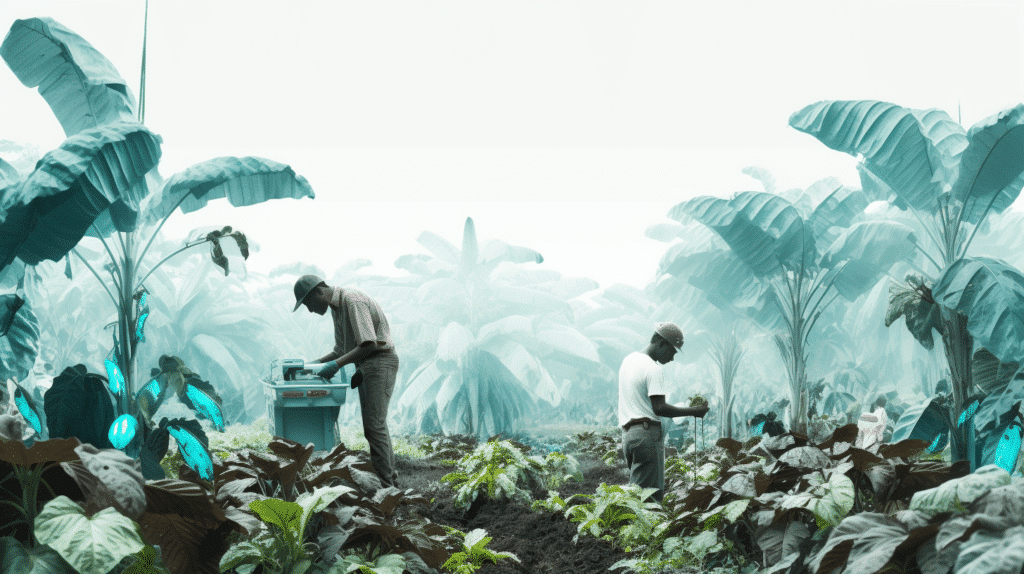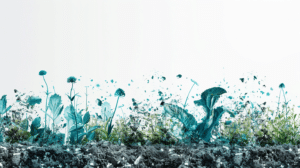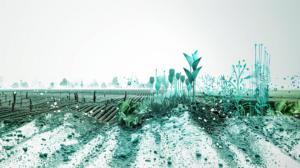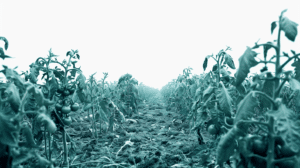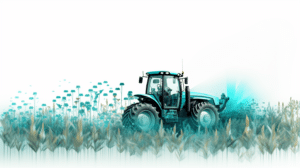What do management books have to say about regenerative agriculture? how does it support climate risk mitigation?
F&B companies are increasingly encouraging the adoption of sustainable and regenerative agriculture among their growers and suppliers. In part, the shift is driven by changes in consumer demands, but the main drive is long-term operational stability and climate risk mitigation, especially in the coffee and cacao industries.
In Elihu Goldratt’s classic management book, “The Goal”, a game called “the dice and matchstick game” is introduced. The goal of the game is to deliver inventory (matchsticks) through different phases in the production cycle (bowls). Each player rolls a die that indicates how many matches he may move to his bowl from the previous bowl, granting he can never move more matchsticks than there are in the previous bowl. Thus, if a player rolls a six but the previous bowl has only 2 matchsticks in it, the player will only move these 2 matchsticks. Goldratt invented this experiment to illustrate the mathematics of supply chain logistics. If supply chains would have worked by the laws of simple probability, the average number of “finished” matchsticks at the end of each round would have been 3.5 – the average of the numbers between 1 and 6. In reality, of course, the matchstick throughput was very often lower, due to the complexities of supply chains, variance in capacity and the rolling impact of unforeseen, adverse events (such as rolling a 1).
This metaphor seems to hold true not only to supply chains as a whole, but also to complex individual links in the chain, such as agri-production – a months-long, multistage process prone to disruptions. As the climate crisis unfolds, extreme weather events, plant pathogens and pest invasion become increasingly erratic, adding more and more variability and pitfalls to what is already a long and complex process.
At this level of complexity, the question then becomes not how to maximize yields, but rather how to minimize uncertainty – because the mean throughput of a complex system will inevitably drop in volatile terms – that’s just statistics.
Minimizing uncertainty in agriculture eventually boils down to resilience – eliminating dependence on specific amounts of inputs and temperatures, and creating robust, self-sufficient systems that calibrate themselves. While it may seem pretty straightforward, this type of resilient farming, or “regenerative agriculture”, as it is often called, goes against most of the practices and principles of conventional, industrial agri-production.
The cacao conundrum
Coffee and cacao are among the world’s largest cash crops for farmers and F&Bs and the highest in demand by consumers. They are also notoriously sensitive, demanding very specific temperature, water, and soil conditions, creating a huge operational climate risk. The combination of climate challenges and demand is requiring cacao and coffee farmers to rethink the ways they approach cultivation, and in some cases reverse their own “modernization” processes – mainly deforestation.
Both crops are relatively short trees, shaded in the wild by the broad canopies of taller, tropical forests, and exist as a part of a larger ecosystem – from fungi and bacterium that perform metabolic services, through birds and insects eliminating pests, to the deep roots of larger trees that preserve the soil structure, transport nutrients and moisture in the soil.
However, as the “green revolution” unfolded, and crops were treated more like assembly line products than biological entities, forests were cut down to maximize yields in the full sun cultivation method. Coffee had largely undergone this transformation, but cacao is still a traditional agroforestry crop.
Rising instability and the uptick in prices are leading some big players to pressure cacao farmers to follow coffee farmers to full sun methodologies to produce quick profits from increased yields. Is that a good long-term strategy?
Yield vs. Stability
Full-sun growth is exactly what it sounds like – bean-producing trees are grown as any other “modern-farmed” crop – in rows, in direct sunlight. Agroforestry, in which the crop uses the forest’s natural canopy as shade, is a more natural – and less environmentally damaging – way to grow cacao and coffee crops. Studies have found five times more carbon stocks in multi-shade agroforestry, are more resilient to drought, floods, storms, and diseases, live significantly longer, but produce less, annually.
The full-sun system has been proven to be more productive in the short run. Initially, deforestation seems worthwhile because of the initial abundance of crops. After a few years, the trees begin to react to the harsh sun and chemical fertilizers and die. Tropical soils are very fragile and the forest is a kind of shield or protective layer. Deforestation exposes the thin fertile layer of soil to fast physical and chemical degradation. It may take many lifetimes to fix
This leads us again to the question – maximize short-term yield, or minimize climate risk uncertainties to produce more, using less, in the long term?
Goldratt’s matchstick and dice game seem to provide a definite answer. Climate change is the ultimate manufacturing constraint. In order to thrive in the long term, we need to synchronize our production methods to the drum of natural disruptions, prioritizing resilience over short-term production peaks.
Leading F&Bs have already realized the need for transformation but are still lacking some of the most basic tools to monitor, assess, and optimize regenerative transformation processes – first among these tools is reliable, and timely field data.
Visibility into remote operations can help corporations support smallholder farmers, ensuring living wages, strengthening local communities, and securing stable sourcing for decades to come.
